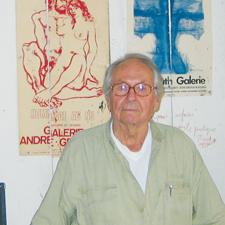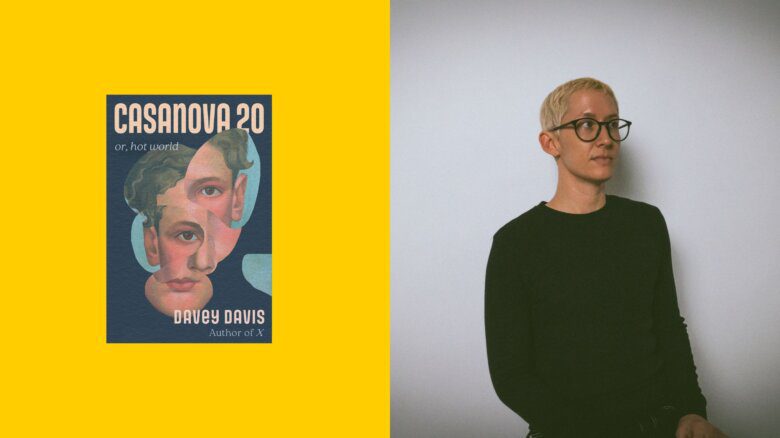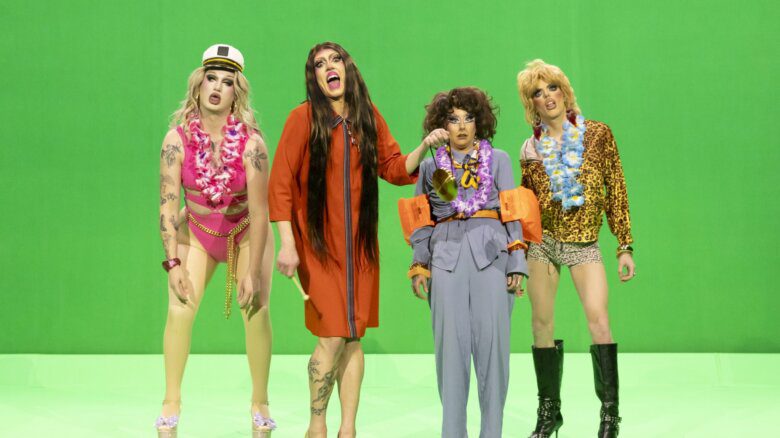“What is it about the male body that I find fascinating?” Peter Flinsch asks over the phone from his Montreal home. “I’m gay. I love men. I’m a creative artist so of course my feelings would be expressed in my art.”
The answer seems obvious enough to make me feel stupid for asking the question, but it’s really that simple. For the past 60 years Flinsch has been drawing, sketching and painting men in various states of undress in what can simply be seen as an adoration of the masculine.
Whether gazing upon one of his paintings of a perfect physique, or a sketch of the dance of glances and innuendos at a cruising bar, the wanton world of Peter Flinsch just feels like a better place to be.
It’s not a place where abnormally muscular men with cleft chins and baseball bat penises hunt for round and puckered asses to plough, or where leather and dildos are standard accoutrement for gay life. It’s a world where beauty comes from a simpler appreciation of the male form.
In his new book Peter Flinsch: The Body in Question, Ross Higgins delves into the life and work of the German born, 87-year-old artist.
Higgins, a professor of anthropology at Concordia University and a co-founder of the Archives Gaies du Québec, had known Flinsch for years before interviewing him in 1993 for his PhD thesis on the history of Montreal’s gay community.
Over the years Higgins continued to conduct interviews and chronicle the life of one of Montreal’s most important gay artists.
“This book is a celebration of his life and work,” Higgins says now. “Given the experience of his arrest in Germany during the war, he has no further fears when it comes to his sexual orientation.”
Born in Leipzig not long after the First World War, Flinsch was raised in a well-off household where art was a constant topic of conversation. The young Flinsch took to art almost by instinct, drawing elegant ladies and gentlemen for friends.
As a teenager, he explored his sexuality with schoolmates while the headmaster railed against the evils of masturbation.
When he came of age, he was forced to join the Nazi Youth like all young men in Germany and avenues for exploration quickly dried up when the Second World War broke out. Flinsch became an officer in the military.
During a Christmas party in 1942, Flinsch was caught kissing another soldier, an act that was punishable under Nazi Law. He was degraded and sent to prison where twice a day he was forced to confess his sin to everyone.
The experience was a defining moment in his life.
“When I was in jail,” Flinsch says, “I would never have believed that one day I could live openly as a gay artist and produce my most personal expression of art to the public and be accepted and even understood.”
After the war, Flinsch worked for the Communists in Chemnitz painting theatre sets. Before long he found himself in postwar Berlin, a changed city under the new regime.
He was part of the artistic milieu and turned to art as his trade, publishing drawings in newspapers and designing sets for the theatre. American, French, English and Russian influences brought about a new spirit of freedom where social life was teeming with cultural attachés and decadence.
People were living it up in Berlin and Flinsch was no exception. It was in this new playland of possibility that he met Heino Heiden, a dancer who he would spend the next 10 years with.
Together Flinsch and Heiden travelled around Europe and eventually landed in Vancouver where Heiden got a job at a ballet school. In 1953, Flinsch got a job working for the CBC once again painting sets, this time for television shows. Their Vancouver stay was brief and soon they were lured to Montreal where Heiden worked on a television show dancing ballet and Flinsch got a job at Radio-Canada, which was known for hiring homosexuals.
Montreal’s gay community was in its infancy then and Flinsch and Heiden relished every tryst through the various gay cruising grounds. But Heiden longed for home and at the end of the 1950s he returned to Germany to work in an opera house. Flinsch decided to stay behind.
“Montreal is a city with international flair, like San Francisco, Paris or Berlin,” Flinsch says. “This comes from the two backgrounds: English and French. There’s also the Native element. It’s created a special race of people in Montreal.”
In his free time, Flinsch sketched men that he would find at the YMCA or at various bars. He would wander through the city and get inspired by the scenes around him and the people he would meet.
“Mostly I pick athletes, not professional art models,” Flinsch says. “People who are at ease with their bodies and who can move without artificiality.”
While other gay men in the 1960s felt the need to hide their sexuality, Flinsch had no problem being open about who he was.
“He was always very interested in the gay world and the kinds of attitudes people have to gay life,” Higgins says. “This is going back to his work in the ’60s where he’s kind of sardonic or sly in his commentary on gay couple dynamics, cruising and attitudes of various types to more recent work. He portrays people that have exaggerated notions of who they are combined with a sense of humour.”
While Higgins’ book does not cover the entire scope of Flinsch’s art, it focuses on his attention to the body and the portrayal of gay Montreal from the 1950s to the present.
“Everything anybody does is political nowadays if by political you mean of influence and importance to public life,” Flinsch says. “I did not set out to do what happened to my art, it just happened. I was there and I had the opportunity and ability to express myself, my personal feelings and my art and I expressed it. Over the years, the development of the public taste has proven me right. This is a very great reward for an artist.”

 Why you can trust Xtra
Why you can trust Xtra


